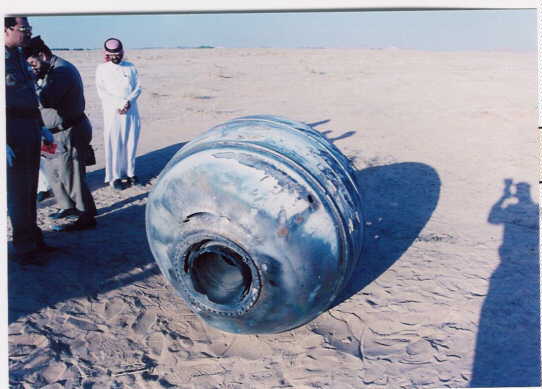
Pieces Of 1,400-Pound Coolant Tank Will Survive Re-Entry. The National Aeronautics and Space Administration and the US Space Surveillance Network are tracking a 1,400-pound tank of toxic ammonia coolant jettisoned over a year ago from the International Space Station. During the last year, the ammonia tank's orbit has slowly degraded due to gravity and atmospheric drag. Expected to re-enter Earth's atmosphere Sunday afternoon or evening, the exact location where the refrigerator-sized tank will land remains unknown. ... NASA expects as many as 15 pieces of the tank to survive the intense heat of re-entry, ranging in size from about 1.4 ounces to nearly 40 pounds, according to MSNBC.
The largest piece of orbital trash ever tossed overboard, the Early Ammonia Servicer coolant tank was discarded by NASA astronaut Clayton Anderson during a July 23, 2007 spacewalk. ... The tank was originally used as a coolant reservoir, boosting the Space Station's cooling system in the event of leaks. ... Should re-entry occur over land, NASA advises that the public should contact local authorities, or the US Department of State via diplomatic channels if outside of the US... "If anybody found a piece of anything on the ground Monday morning, I would hope they wouldn't get too close to it," Suffredini said. -aeronews
The image above is from Paul Maley's Space Debris page. Paul writes:
"... a large fragment that survived reentry on January 12, 2001 after falling in Saudi Arabia. It is from a Delta rocket third stage motor casing. There were no sonic booms or flashes in the night sky signalling its arrival. It was simply discovered lying in the sand, weighing some 70kg. This is a titanium case and located inside a PAM-D (payload assist module). This particular module gives the satellite payload its final thrust and allows for some positioning maneuvers in orbit to release the spacecraft properly. The PAM-D completes its task and becomes space junk, eventually decaying from orbit."
No comments:
Post a Comment